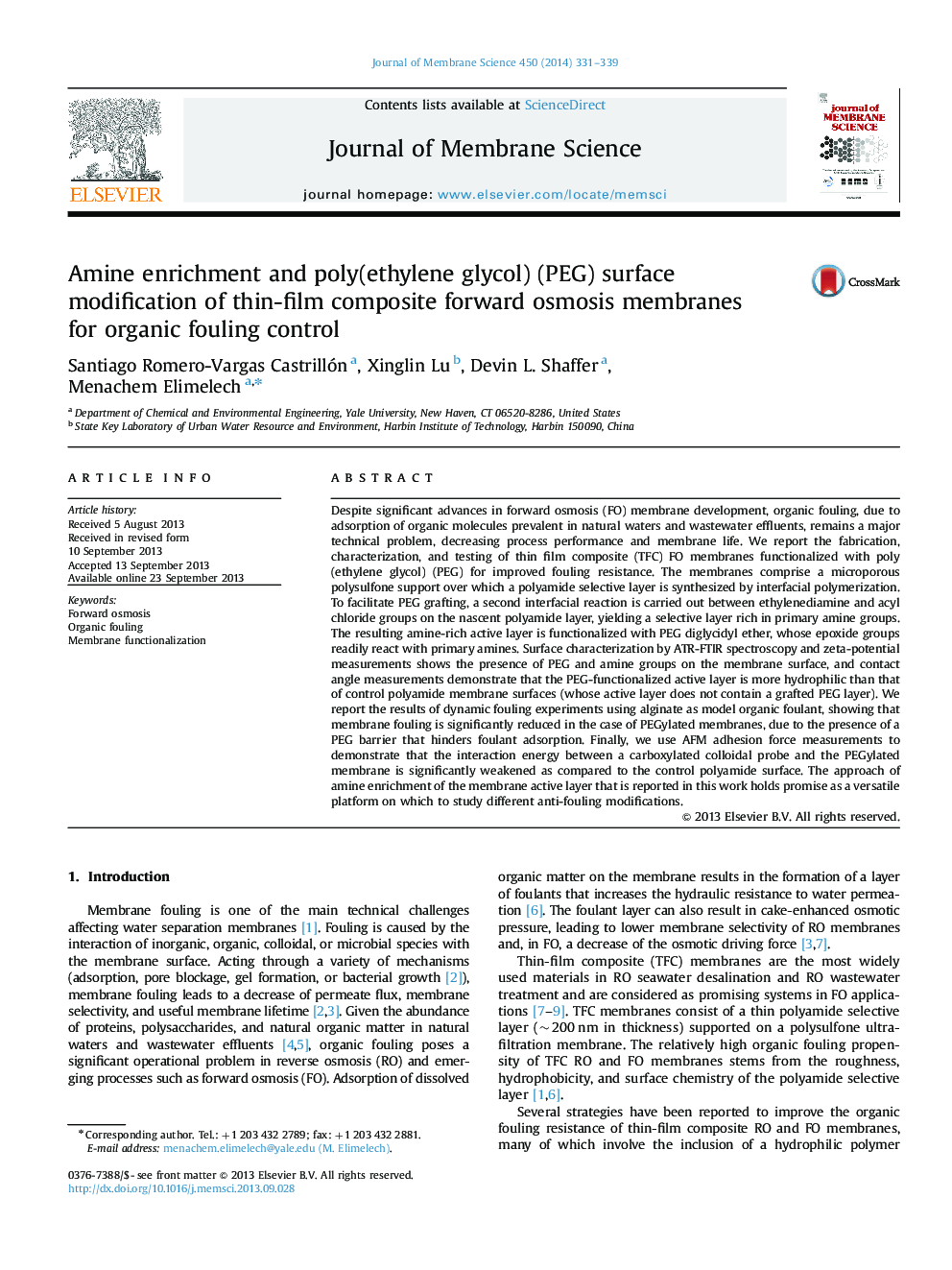| Article ID | Journal | Published Year | Pages | File Type |
|---|---|---|---|---|
| 633856 | Journal of Membrane Science | 2014 | 9 Pages |
•We present a low-fouling thin-film composite forward osmosis membrane.•An amine-rich polyamide active layer facilitates surface functionalization with PEG.•Improved organic fouling resistance at high (250 mg/L) alginate feed concentrations.
Despite significant advances in forward osmosis (FO) membrane development, organic fouling, due to adsorption of organic molecules prevalent in natural waters and wastewater effluents, remains a major technical problem, decreasing process performance and membrane life. We report the fabrication, characterization, and testing of thin film composite (TFC) FO membranes functionalized with poly(ethylene glycol) (PEG) for improved fouling resistance. The membranes comprise a microporous polysulfone support over which a polyamide selective layer is synthesized by interfacial polymerization. To facilitate PEG grafting, a second interfacial reaction is carried out between ethylenediamine and acyl chloride groups on the nascent polyamide layer, yielding a selective layer rich in primary amine groups. The resulting amine-rich active layer is functionalized with PEG diglycidyl ether, whose epoxide groups readily react with primary amines. Surface characterization by ATR-FTIR spectroscopy and zeta-potential measurements shows the presence of PEG and amine groups on the membrane surface, and contact angle measurements demonstrate that the PEG-functionalized active layer is more hydrophilic than that of control polyamide membrane surfaces (whose active layer does not contain a grafted PEG layer). We report the results of dynamic fouling experiments using alginate as model organic foulant, showing that membrane fouling is significantly reduced in the case of PEGylated membranes, due to the presence of a PEG barrier that hinders foulant adsorption. Finally, we use AFM adhesion force measurements to demonstrate that the interaction energy between a carboxylated colloidal probe and the PEGylated membrane is significantly weakened as compared to the control polyamide surface. The approach of amine enrichment of the membrane active layer that is reported in this work holds promise as a versatile platform on which to study different anti-fouling modifications.
